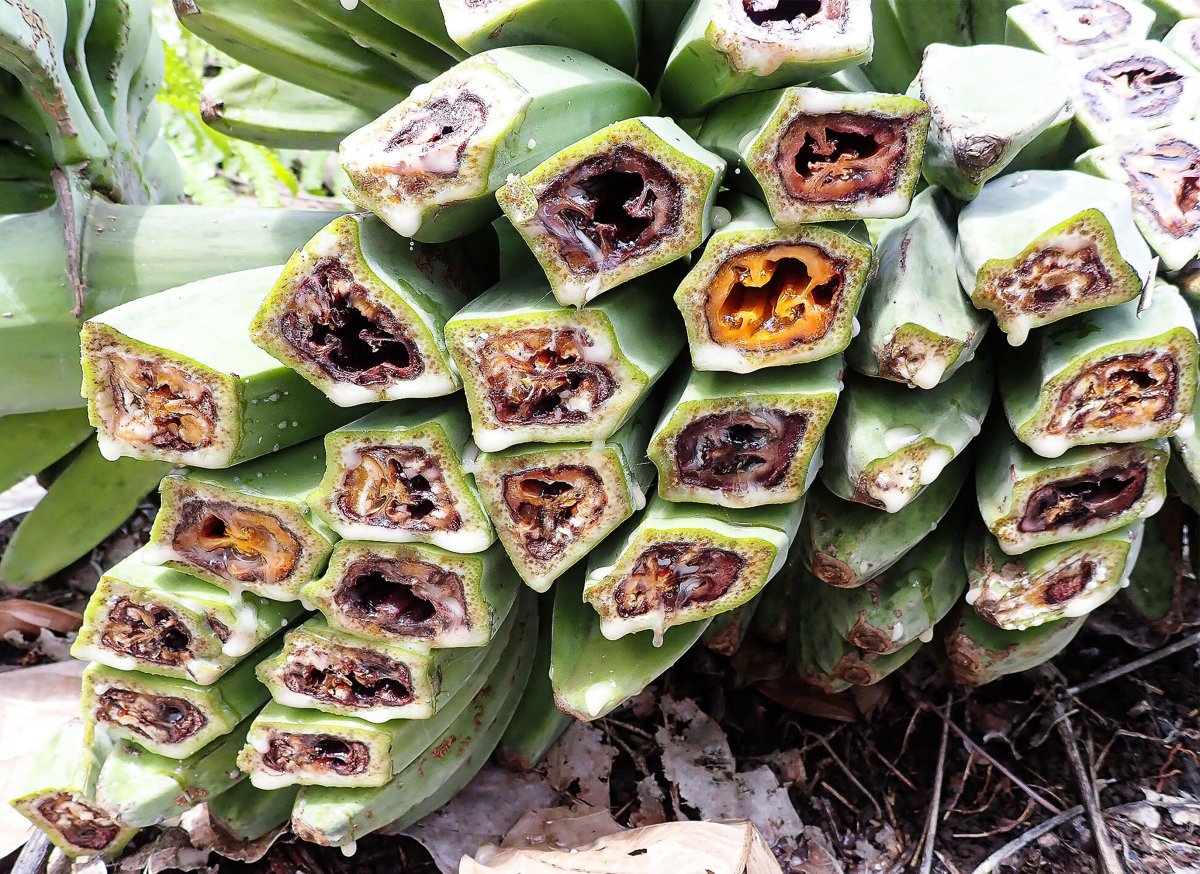A "devastating" disease that makes bananas look like they are bleeding when stems are cut has been found in mainland Malaysia and looks set to spread across southeast Asia, scientists have said.
Banana Blood disease is caused by a type of bacteria that causes the plant to wilt and leads to significant crop loss. Symptoms include internal rot and discoloration, with the plant becoming stained a red-brown color, earning it the name Blood disease. There is no cure for it.
It was first reported in a province in Indonesia in the early 1900s and was successfully contained for decades. However, in 1987 it was detected in West Java and has since spread to several other Indonesian islands and peninsula Malaysia.
The impact of the disease on crop production can be significant. When it first emerged, whole plantations had to be abandoned. In the 1980s, many farmers had to stop production.
Bananas are a food staple for many people in developing countries in the tropics. It is also the world's most consumed fruit. Understanding how fast and where Blood disease is spreading has important implications for food security.
Many banana species are already facing threats from other diseases, including Panama disease, a catastrophic fungal infection that causes banana plants to wilt and die. This disease arrived in Latin America in 2019 and could create a "bananapocalypse" in the region over the next decade.
In a study published in Plant Disease, researchers from Australia and Indonesia have tracked the current geographical distribution of Blood disease and said it is likely the disease will spread across southeast Asia. They found Blood disease in 18 different varieties of banana, including the world's most popular—the Cavendish banana. The Kepok variety, which is popular in Indonesian cooking, was found to be highly susceptible.

"Without intervention, the losses are likely to be devastating due to epidemics in areas where growers have no experience managing this disease," study author Jane Ray, from the University of Queensland, Australia, said in a statement. "I am determined to understand this disease and use this information to develop improved diseases management options, helping to reduce crop loss and mitigate the risk of spread to new areas, improving food security in the tropics."
In the paper, the team said the long-distance distribution of Blood disease suggests it is spreading as a result of human transportation of infected banana material. In a shorter range, the disease appears to be able to spread from a single infection source, potentially meaning insects, water and soil can facilitate its movement.
"The rapid expansion of its geographical range makes Blood disease an emerging threat to banana production in Southeast Asia and beyond," the study says.
Ray said a better understanding of disease transmission is needed to stop the rapid expansion of Blood disease. "Our study shows that all disease problems start small and can be contained if acted on early but if left unchecked and allowed to spread, they can become major constraints to production over large geographic areas," she said.
Uncommon Knowledge
Newsweek is committed to challenging conventional wisdom and finding connections in the search for common ground.
Newsweek is committed to challenging conventional wisdom and finding connections in the search for common ground.
About the writer
Hannah Osborne is Nesweek's Science Editor, based in London, UK. Hannah joined Newsweek in 2017 from IBTimes UK. She is ... Read more
To read how Newsweek uses AI as a newsroom tool, Click here.








